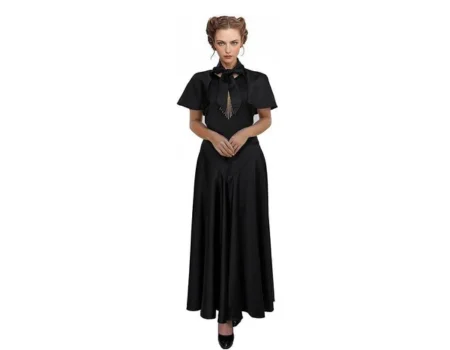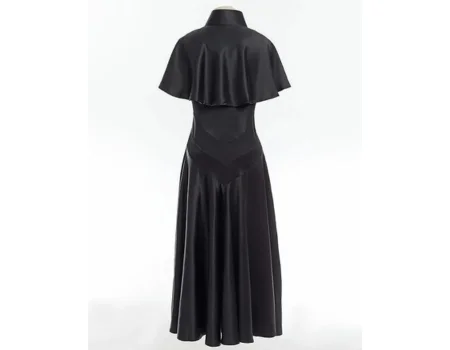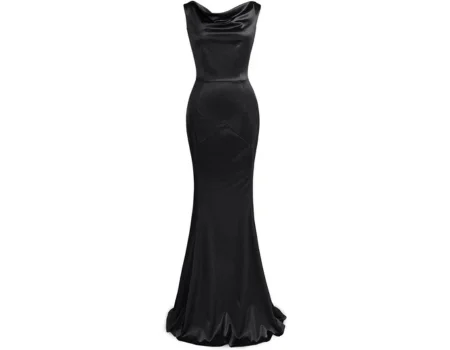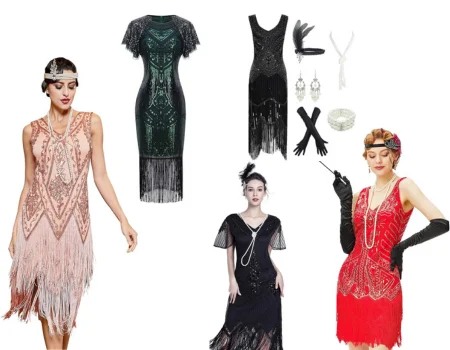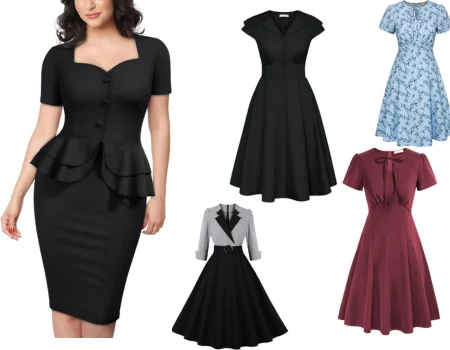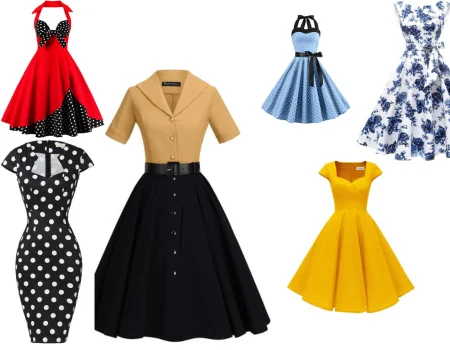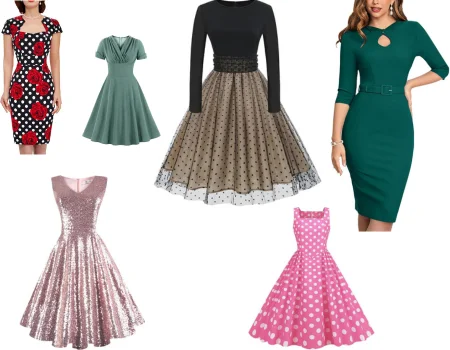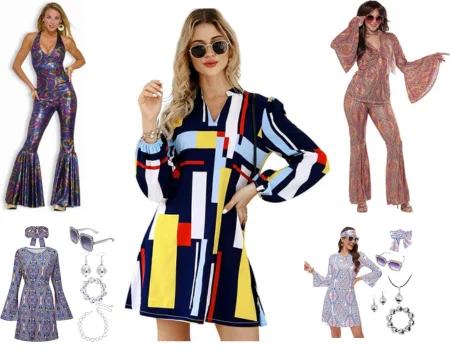The favorites of many women who love vintage fashion, these 1930s dresses will make you stand out anywhere you go, from a reunion with old friends, a costume party, or an important event. Highlight your style with this selection of the best dresses from the 1930s that we have for you.
Catalog of 1930s dresses at the best price.
The Timeless Elegance of 1930s Dresses
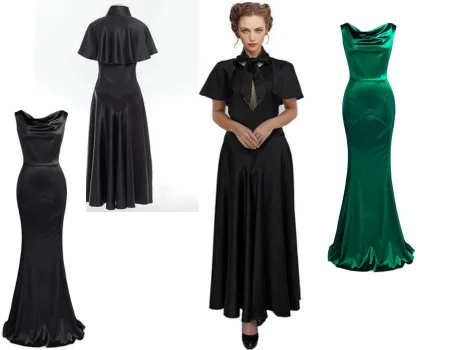
Despite the economic situation of the time due to the Great Depression, the 1930s were marked by elegance and sophistication in fashion. The fashion of this era combined the practicality of the previous decade with a touch of glamour, making it unique. Designers were constantly creating new pieces that were both functional and stylish. Among the most iconic garments of these years are the 1930s dresses, which continue to be a symbol of timeless fashion.
The Influence of Hollywood on 1930s Fashion
With the popularization of cinema, great stars like Joan Crawford, Marlene Dietrich, and Greta Garbo became icons who influenced the masses to wear the clothes they wore. The evening dresses of the 1930s, often seen on the silver screen, epitomized glamour with their flowing lines, luxurious fabrics, and intricate details.
Key Characteristics of 1930s Dresses
1930s dresses were characterized by their sophisticated silhouettes and attention to detail. The following are some of the key features that defined dresses in the 1930s:
Silhouettes and Cuts:
- Bias-Cut Dresses: Considered the most revolutionary technique of the 1930s, it was popularized by Madeleine Vionnet. This technique involved cutting the fabric at diagonal angles, which accentuated the natural curves. Bias-cut dresses were very popular for evening wear.
- Natural Waistlines: Unlike the dresses of the 1920s, which had a dropped waist, the dresses of the 1930s emphasized the natural waistline of women. It was also common to use belts to accentuate the waist even more.
- Sleeve Variation: This decade saw a variety of sleeve styles that highlighted the uniqueness of each dress, from dramatic puffed sleeves to more discreet Japanese sleeves.
- Hemlines: While most evening dresses were floor-length, daytime dresses started featuring hemlines that reached mid-calf, a style known as midi.
Fabrics and Textures:
- Silk: This was a popular choice for dresses in the 1930s, especially for evening gowns and formal attire. The elegance and luxurious texture of silk made it an ideal material for creating luxury garments.
- Crepe: Widely used for both evening and day dresses due to its fluid drape and crinkled texture.
- Chiffon: Lightweight and transparent, chiffon allowed for layering, creating unique and elegant designs.
- Cotton and Rayon: These were the most common fabrics used for more informal or daytime clothing, being practical and comfortable.
Colors and Patterns:
- Pastels and Neutrals: Generally, colors ranged from neutral tones to soft pastels. These versatile colors made them perfect for everyday use.
- Bold and Dark Hues: For the evening, stronger shades like navy blue, black, and deep red tones were often used.
- Floral Prints and Geometric Patterns: Patterns were also popular in the 1930s, with floral prints and geometric designs being particularly prevalent. These patterns added visual interest and variety to the otherwise simple silhouettes.
Types of 1930s Dresses
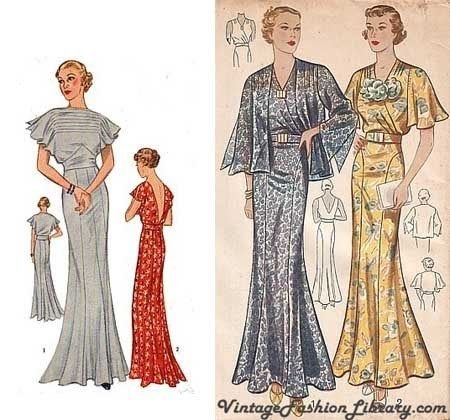
The 1930s saw a variety of dress styles, each serving different occasions and reflecting the era’s aesthetic sensibilities. Here are some notable types of 1930s dresses:
1930s Evening Gowns
Evening gowns in the 1930s were the epitome of glamour. These dresses often featured floor-length hemlines, bias cuts, and luxurious fabrics like silk and satin. Designers paid great attention to details, incorporating elements such as beadwork, sequins, and lace. The 1930s evening gown was designed to make a statement, whether at a high-society event or a Hollywood premiere.
1930s Day Dresses
Day dresses in the 1930s were practical yet stylish. They typically featured simpler designs compared to evening gowns but still retained an air of elegance. Common features included fitted bodices, flared skirts, and tailored sleeves. These dresses were suitable for a variety of daytime activities, from work to social gatherings.
1930s Tea Dresses
Tea dresses were a popular choice for informal afternoon gatherings. These dresses were often made from lightweight fabrics like cotton or rayon and featured playful prints and patterns. The 1930s tea dress was characterized by its comfortable fit and feminine details, such as ruffles, bows, and lace trim.
1930s Cocktail Dresses
Cocktail dresses emerged as a fashionable choice for semi-formal occasions. These dresses were typically shorter than evening gowns, with hemlines falling just below the knee. They combined elements of day and evening wear, featuring elegant fabrics and stylish designs. A 1930 cocktail dress was perfect for events that required a touch of sophistication without the formality of a full-length gown.
1930s Formal Dresses
Formal dresses in the 1930s were reserved for special occasions such as weddings, balls, and galas. These dresses were often elaborate, with intricate detailing and luxurious fabrics. The 1930s ball gown, for example, was a showstopper with its voluminous skirt and ornate embellishments. Designers of the time used techniques like pleating, ruching, and draping to create stunning visual effects.
Iconic Designers of the 1930s
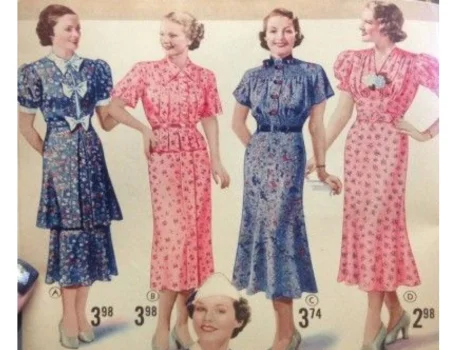
Several designers left a lasting impact on 1930s fashion, each bringing their unique vision to the era’s dress styles. Some of the most influential designers included:
Madeleine Vionnet
Known as the “Queen of the Bias Cut,” Madeleine Vionnet revolutionized fashion with her innovative techniques. Her bias-cut dresses were a hallmark of the 1930s, offering a sleek, body-hugging silhouette that was both elegant and comfortable.
Coco Chanel
Coco Chanel continued to be a major influence in the 1930s, building on her success from the previous decade. Chanel’s designs emphasized simplicity and practicality, with an air of sophistication. Her use of jersey fabric and her creation of the “little black dress” were particularly noteworthy.
Elsa Schiaparelli
Elsa Schiaparelli was known for her avant-garde designs and playful approach to fashion. She often incorporated surrealist elements into her dresses, making them stand out for their creativity and boldness. Schiaparelli’s work in the 1930s included collaborations with artists like Salvador Dalí, resulting in some of the most memorable fashion pieces of the era.
Modern Interpretations of 1930s Dresses
The timeless appeal of 1930s dresses continues to inspire modern fashion. Designers today often draw on the elegance and sophistication of the 1930s to create contemporary pieces with a vintage twist. Here are some ways in which 1930s-inspired dresses are being reinterpreted:
1930s Inspired Dresses
Modern designers frequently look to the 1930s for inspiration, incorporating elements such as bias cuts, natural waistlines, and luxurious fabrics into their collections. These 1930s inspired dresses capture the essence of the era while adding a contemporary flair.
1930s Reproduction Clothing
For those who want an authentic 1930s look, reproduction clothing is a popular option. These pieces are carefully crafted to replicate the styles and techniques of the original 1930s dresses, often using vintage patterns and fabrics. 1930s reproduction clothing allows fashion enthusiasts to experience the elegance of the era firsthand.
Where to Find 1930s Dresses for Sale
For those interested in adding a touch of 1930s elegance to their wardrobe, there are several options available:
- VintageStore.top: Here you will find a wide variety of vintage items, the best place to look for your retro dresses
- Vintage Shops and Boutiques: Many vintage shops specialize in 1930s dresses, offering a range of original pieces in various conditions. These shops often provide a curated selection of high-quality garments.
- Online Marketplaces: Websites like Etsy and eBay are treasure troves for vintage fashion enthusiasts. These platforms feature a wide array of 1930s dresses for sale, from original pieces to modern reproductions.
- Specialty Retailers: Some retailers focus specifically on vintage-inspired clothing, offering new garments that capture the look and feel of the 1930s. These retailers often combine modern manufacturing techniques with vintage aesthetics.
Conclusion
The allure of 1930s dresses lies in their timeless elegance and sophisticated designs. From the glamorous evening gowns seen in Hollywood films to the practical yet stylish day dresses worn by everyday women, 1930s fashion continues to captivate and inspire. Whether through original vintage pieces, reproduction clothing, or modern interpretations, the legacy of 1930s dress fashion lives on, offering a glimpse into an era of unparalleled style and grace. For those seeking to embrace the charm of the past, the world of 1930s dresses offers endless possibilities for creating a chic, vintage-inspired wardrobe.


